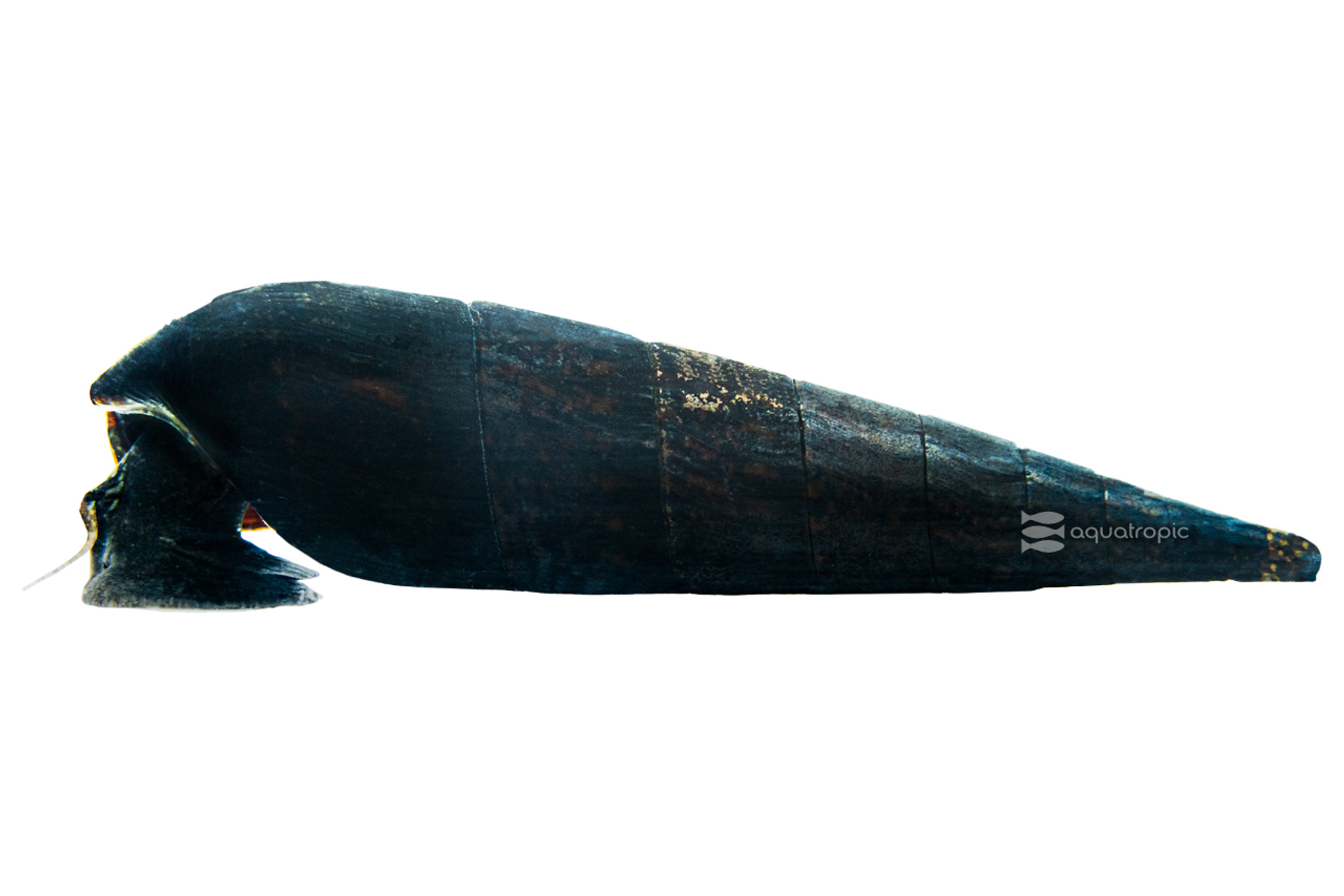The Devil In The Details

The Lava Devil Snail has an interesting name in that it is half understandable. The foot and shell are a mix of reddish brown and black, that has a lava-like appearance. The “Devil” part is harder to understand, these are very peaceful snails. They won't really bother any other snails in your tank, and they don't reproduce unless kept in brackish salinity, so they won't overrun your aquarium either. The name does sound cool, for those of you who are into that! One possible explanation is that they are allegedly a delicacy over part of their native range, and apparently are quite odorous when cooking, which may have something to do with the naming. The scientific name for Lava Devil Snails is Fauna ater, and there is also an all-black variant of it, predictably called the Black Lava Snail. It is also sometimes called the Black Spike Snail because of its conical shape. Occasionally, specimens will come to market with a coloration that is called “cappuccino,” on which the pointy end of the snail is white. It is unclear as to whether or not this is a color morph, a different species, or the result of bleaching (natural or otherwise). As a result of this ambiguity, we can't say for sure that this article will apply to the care of them.
Regardless of the color, or what you call it, these are great snails. They will consume algae, as long as it's on the bottom of the tank as their shells make them too heavy to move up the glass effectively. Where they really shine is in clean up. They are great detritus eaters and will move through the substrate, eating leftover food and fish waste, all while turning over the sand bed and keeping it oxygenated. This habit does mean that they can be disruptive to poorly rooted and newly established plants, but they generally won't consume plant matter unless they are dead or dying. On the other hand, it also means your substrate stays clean and prevents the possibility of gas buildup.
With their digging lifestyle in mind, softer and finer substrates will make it easier for them to exhibit their natural behaviors. You can keep as many as you like in your aquarium, but we suggest only one for every ten gallons of capacity, unless the tank is very shallow and has a large footprint. They are very hardy and durable, but like most snails, can be susceptible to fast changes in water temperature. They don't mind dark aquariums and are just fine in displays that are bright enough to house plants as well.
Lava Devil Snails are originally from Southeast Asia, with varying reports of where they were first documented. They get fairly large, possibly up to nearly four inches (again why they aren't likely to spend much time in the higher reaches of the aquarium.) They do well in typical tropical aquarium environments. Keep temperatures in the 70s, and a pH between 7 and 8. They are not sensitive to hardness unless your values are extremely hard or soft, but if you’re looking to mimic their natural habitat, err on the side of slightly harder water. They are also a good choice for brackish tanks if they are acclimated appropriately. In the wild, most snails live less than a year on average, but in captivity, it isn't uncommon for this snail to live five years or more! They are similar to Rabbit Snails in regard to their shell shape, but these species are not closely related enough to interbreed. Even if they were, breeding Lava Devil Snails in captivity is very difficult.
In regard to tankmates, these snails are going to mind their own business. You can keep them with the full array of decorative shrimp, and any snails that aren't going to eat them. Snails are a natural food for crayfish, so we don't recommend housing Lava Devils snails in aquariums that feature them. Choose fish that won't harass and pick on the snails and obviously don't put in them in tanks with fish that eat snails like Pufferfish, unless you are expecting your Puff to have a tasty snack.
Fauna ater of all colorations and names are excellent and useful aquarium additions. Unless your aquarium is overpopulated with snails and / or devoid of fish and their associated food, your snails will likely never need supplemental feeding. If you feel your tank is low in available food, you can always add a Nutramar Freshwater Complete Shot to somewhere the snails can get at it as needed. These large peaceful snails can be an interesting element to a wide variety of freshwater displays and if you don't have one yet, think about adding one to your tank (from Aquatropic) today!